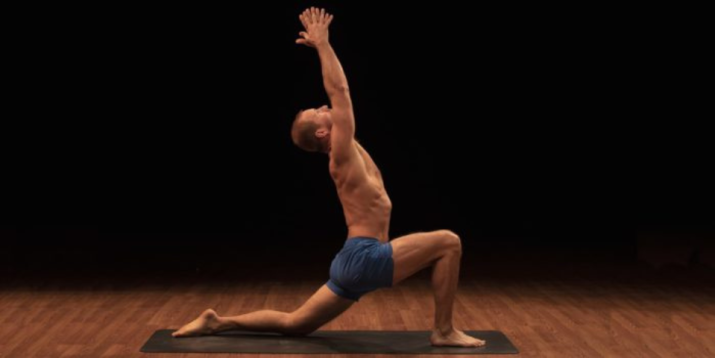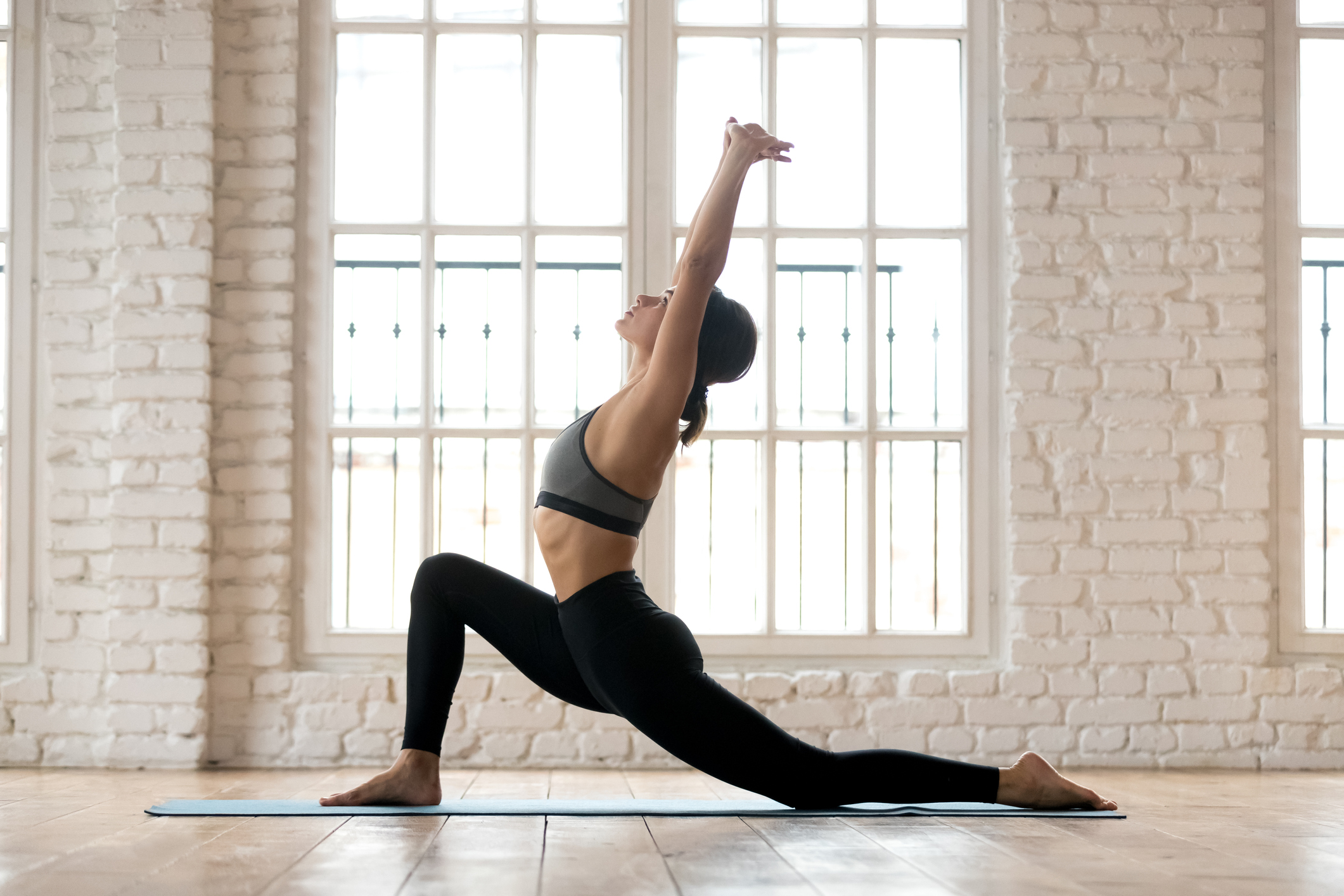How to Do Anjaneyasana (Crescent Lunge)

Although you might be familiar with doing lunges in your every day workouts, the low lunge or crescent lunge in yoga is slightly more complex. Crescent lunge (or anjaneyasana in Sanskrit) includes both a lunge and a backbend, and as such, it activates your leg muscles, stretches your hips, opens your chest, and challenges your balance.
The Sanskrit name for crescent lunge, anjaneyasana, references Anjani, the mother of the Hindu monkey god Hanuman, who represents devotion and fearless service. As you step into this low lunge, you can express devotion to your yoga practice and elicit the courage to go beyond your comfort zone on the mat by sinking deeper into the lunge or lengthening deeply into the backbend.
Low Crescent Lunge (Anjaneyasana): Step-by-Step Instructions
Follow the step-by-step instructions below to learn how to do crescent lunge with proper form.
Set Up
- Begin in downward facing dog (adho mukha svanasana) with your hands shoulder-width apart and your feet a few inches apart.
- Lift one foot off of the floor, bend the knee and drive it towards your chest, and step the foot in between your hands.
- Lower the back knee on to the mat, and untuck your toes so the top of your back foot is on the floor.
Getting into the pose
- Slide your back knee on the ground as far back as is comfortable. Keeping your front leg bent, lift your chest up and raise your arms to the ceiling.
Alignment
- Press your hips forward and keep your front knee in line with your ankle and pointing straight forward. Square your hips so both hip bones are pointing forward.
- Engage your core as you lift your sternum to initiate a slight back bend, but keep your belly button pulled into your back to stabilize your spine. Reach your arms high with your palms facing one another. Keep your shoulders pressed down.
Beginner Tips for Anjaneyasana
- Ensure that your front knee aligns straight over your ankle.
- Avoid overarching your back — only arch as far back as is comfortable, and always keep your abs engaged as you do this.
- Use child’s pose or downward facing dog as a counter pose for this stretch.
How to Make It Easier
- Place a block next to both of your hands while in downward facing dog. Once you step forward into the lunge, put one block under each hand to give you an extra lift and to support your balance before reaching your arms up to the sky.
How to Make It Harder

- Go deeper into low crescent lunge by gazing up to the ceiling to further open your chest.
- Reach your arms back toward the wall behind you, creating an arch in the upper back. As you do this, remember to keep your core engaged, as this will help to protect your lower back.
Benefits of Low Crescent Lunge
- If your hips are tight, crescent lunge is an excellent yoga pose to stretch them. As you press forward into the lunge, you’ll feel a deep stretch your hip flexors, groin, psoas, glutes, hamstrings, and quadriceps.
- Additionally, this pose is good for opening up the front of your torso as you arch your back. Practicing this slight backbend helps with your balance, and it stretches the muscles of your abdominals and lower back.
- Anjaneyasana is often used at the beginning of a vinyasa class to warm up your body for more challenging poses in the sun salutations, like Warrior 1 (virabhadrasana).
